Review of the smartphone ASUS ZenFone 4
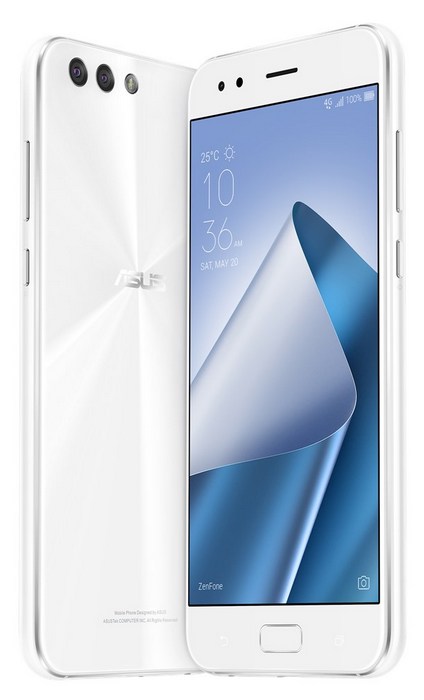
From the fourth generation of the ZenFone smartphone line, we have already managed to touch two models: Max and Selfie . These are typical representatives of the class of smartphones with a metal non-folding case. But the hero of this review - just ZenFone 4 - belongs to the rather small class of “glass sandwiches” today. And he boasts two main cameras with a very decent quality of shooting. And even the front camera.
Specifications
Operating system : Android 7.1 with ZenUI 4.0 GUI
Processor : Qualcomm Snapdragon 630 (eight-core, 64-bit)
Graphics : Adreno 508
RAM : 4 GB
Data storage : 64 GB
Memory card : micro SD up to 2 TB
Display : 5.5-inch, 1920 x 1080, Super IPS, brightness 600 cd / m2
Cameras :
- Main camera: 12 MP, aperture f / 1.8, focal length 25 mm (viewing angle 83 °), 4-axis optical stabilization
- Wide-angle camera: 8 MP, focal length 12 mm (viewing angle 120 °)
- Front: 8 megapixel, f / 2.2 aperture, focal length 24 mm (viewing angle 84 °)
Sound : supports DTS Headphone: X technology, 192 kHz / 24-bit audio format playback
Wireless :
- WLAN 802.11 a / b / g / n / ac
- Bluetooth 5.0
- Wi-Fi direct
- NFC
Navigation : GPS, AGPS, GLONASS, BDS, GAL
Battery : 3300 mAh, fast charge function
Dimensions : 155.4 x 75.2 x 7.5 mm (H x W x T)
Weight : 165 gr.
AnTuTu specifications 




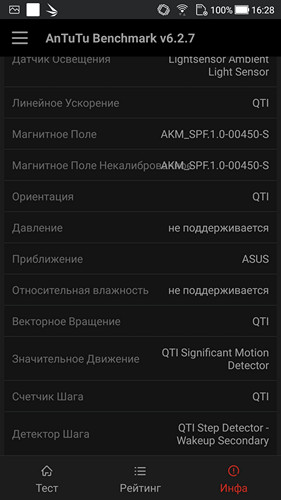






Appearance
The front part of the ZenFone 4 is characteristic of the same-named line: the protective glass is rounded around the perimeter, the Home button is made in the form of a touch button that plays the role of a fingerprint sensor.


To the left of the speaker, a modest front-facing camera and an almost indistinguishable illuminance / proximity sensor clouded over.

The ends of the smartphone are rounded, and the chamfer removed from both sides visually separates the body from the glass panels.

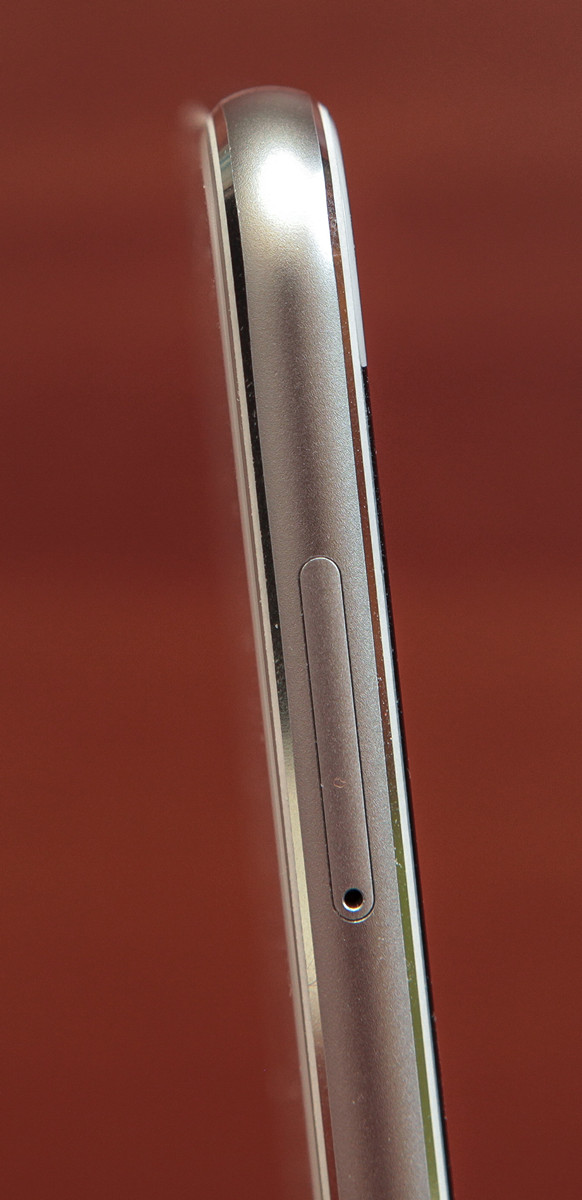
The top face is unusually empty - only a microphone hole is visible.


On the left is a tray for SIM-cards and memory cards. Alas, but in ZenFone 4 you can insert either one SIM card and a memory card, or two SIM cards.


It turns out that the headphone jack has moved to the bottom. There is also a USB Type C connector.


Well, on the right side of the power button and volume.

On the reverse side, a completely different, unusual picture opens up: the back surface is completely covered with the same protective Gorilla Glass, with the same rounded edges. This glass sandwich with an aluminum layer.

Please note: both cameras and flash are completely hidden under glass. No inserts, honest monolith. Finally, ASUS has a smartphone without protruding lenses!


Not forgotten and corporate concentric pattern Zen.
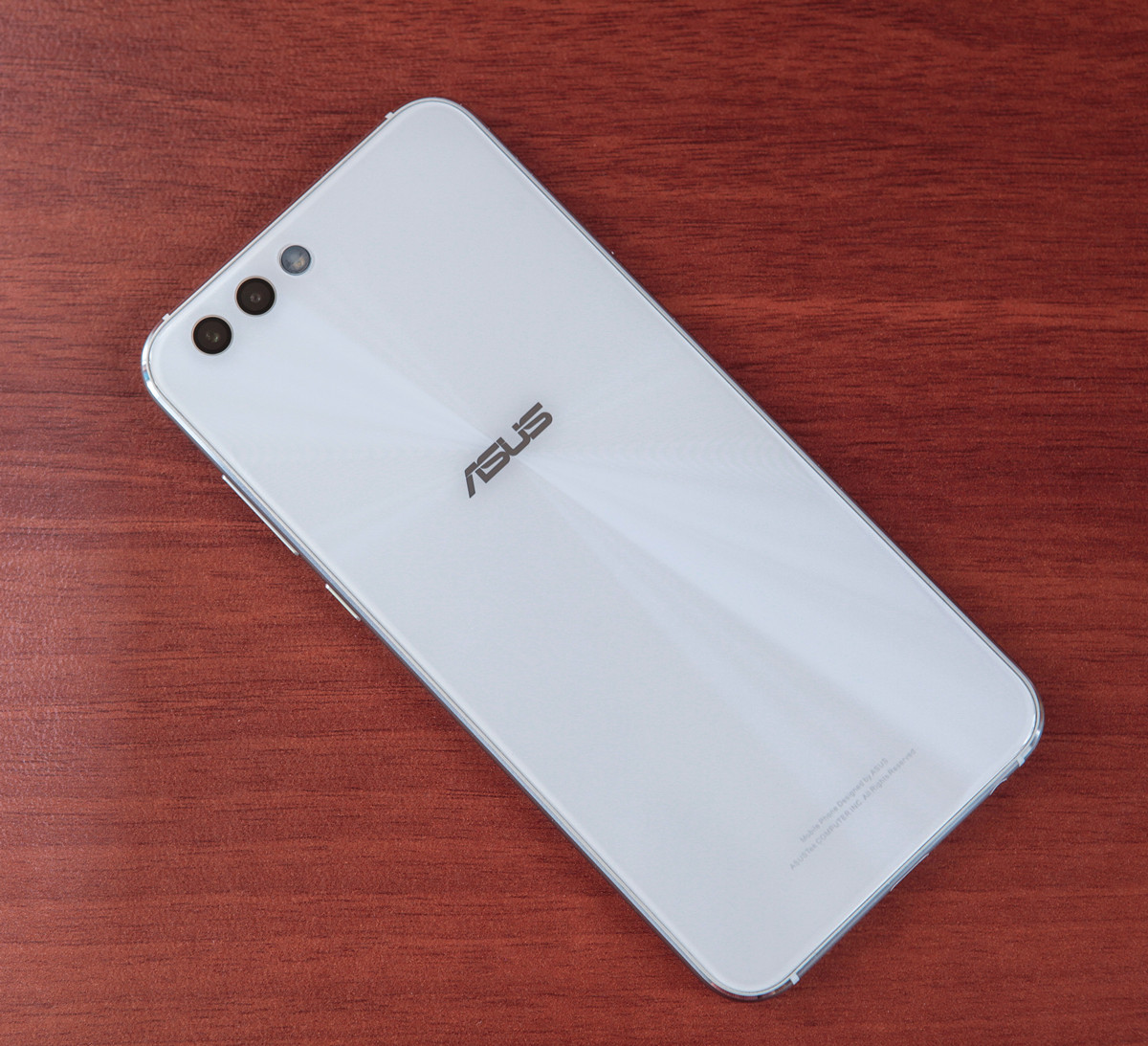
In my opinion, it looks stylish and “rich”. And in the hand it feels solidly weighty, monolithic. But the glass panels have two drawbacks: dropping is much worse than the metal, even though it is Gorilla Glass, and the smartphone turned out to be damn slippery! During testing, we had to strictly monitor our movements in order not to accidentally drop a brisk device. It was especially risky to take him out of the pocket of his jeans, when he was still holding the edge, and with only three fingers. At this moment, you dream of fingers like a gecko, who is able to lazily walk on a vertical glass.
And here I appreciated the wise step of the manufacturer, who put in the kit a silicone transparent case! It does not rush into the eyes, but it increases by a little grip. Yes, and some no, and the protection of the rear glass panel.


Well and still in a set there is a familiar headset ZenEar, many times mentioned in previous reviews.
Display
The higher positioning of the ZenFone 4 in the line of the same name is also emphasized by the display quality - Super IPS matrix, brightness 600 cd / m2, resolution 1920x1080. I also cannot complain about the quality of color reproduction, the image is juicy, but at the same time it is not flashyly colorful, with a moderate saturation of colors.
Sound
Good news for lovers of good sound: ZenFone 4 supports DTS Headphone technology: X - using appropriate headphones, you can listen to sound in 7.1 format. And the smartphone can play 192 kHz / 24-bit audio files. Naturally, you can feel it only on really good headphones.
Photography
Photography is the strongest side of ZenFone 4. What surprised me was the very good shooting quality of the front camera with the traditionally tiny lens: moderate optical distortion and relatively low noise level, very realistic color reproduction. But two rear cameras are of much greater interest: with a “normal” focal length and wide angle. This tandem is already becoming familiar - the ZenFone 4 Max also has two rear cameras, and the ZenFone 4 Selfie has two front-facing cameras. The camera with the “normal” focal length of the glass ZenFone 4 is more high-aperture: the aperture is f / 1.8, and it is also equipped with a 4-axis optical stabilizer, which further facilitates shooting in low light. For comparison, in the same Max, the main camera is less high-aperture, with an f / 2.0 aperture, and without a stabilizer.
Of course, the lens is a very important thing, but the matrix is just as important. The ZenFone 4 main camera is based on the 12-megapixel Sony IMX362, the same as in the two-chamber ASUS Zenfone 3 Zoom . The peculiarity of this matrix is in the increased pixel size (1.4 μm), which reduces thermal fluctuations between cells, which means lower noise at high ISOs, and as a result, more gentle internal camera image processing. By the way, the Qualcomm Spectra 160 ISP processor is responsible for image processing. Also, the main camera ZenFone 4 is equipped with a color correction sensor, which makes adjustments to the white balance, analyzing the prevailing spectrum of lighting in the scene. The wide-angle camera is based on the 8-megapixel Omnivision 8856 matrix with a pixel size of 1.12 μm and an f / 2.2 aperture. Exactly the same matrix is in the front camera, only it has a lens with the same field of view as the main camera.
I also want to note the very fast and accurate focusing of the smartphone. During the review, I had only two autofocus misses out of a few hundred shots. The reason for the "sniper accuracy" ZenFone 4 lies in the system of two-pixel phase focusing, which for focusing uses all the pixels of the matrix.
The photo application interface in ZenFone 4 is the same as in the previously reviewed models of the current line of smartphones. It seems that now the "enhancement" for BeautyMaster self-portraits, also repeatedly described, will be an integral part of the software.
Automatic shooting setup:
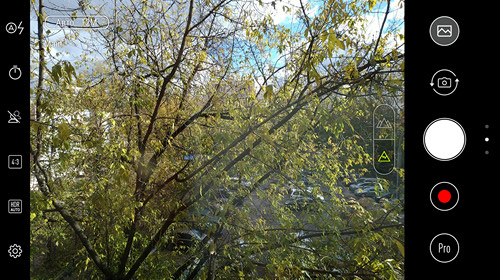
Manual setting of shooting:

By the way, if you like to bring photos to perfection, carefully adjusting all sorts of options in your favorite editor, you can use RAW shooting, not JPG. This mode is supported by both rear cameras.
If the main screen of the photo application is swipe to the left, the screen for selecting creative filters will open:

And when swiping to the right, you can select shooting modes:
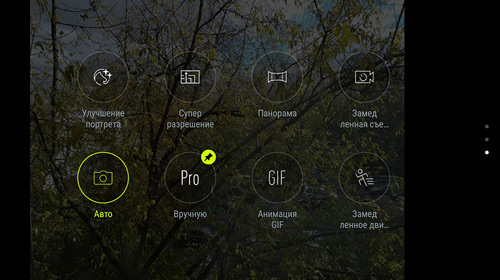
Shooting examples
Wide and main camera:




Wide angle:

Primary:




Wide angle:

Primary:





Wide and main:


Primary:

Wide angle:

Primary:

Frontal:

Main and wide-angle:


Primary:







Wide angle:

Primary:




Wide angle:

Primary:





Wide and main:


Primary:

Wide angle:

Primary:

Frontal:

Main and wide-angle:


Primary:



Performance
ZenFone 4 comes with a 64-bit eight-core Qualcomm Snapdragon 630 processor . Adreno 508 graphics chip. 4 GB RAM. 64 GB is available for data storage, and instead of one of the SIM cards, you can also install a micro-SD memory card with a capacity of up to 2 TB. From pleasant bonuses, you can note the presence of NFC - contactless payments are available in stores, as well as dual-band Wi-Fi (2.4 and 5 GHz).
The operating system is Android 7.1, with a proprietary graphic shell ZenUI 4.
Benchmark Results
Geekbench
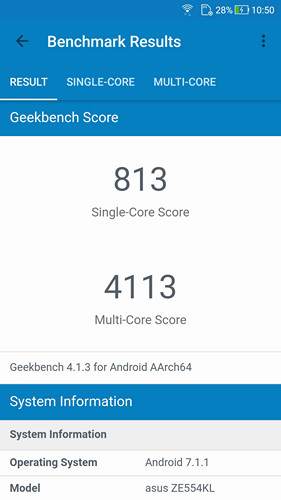

Gfxbench




3Dmark


AnTuTu
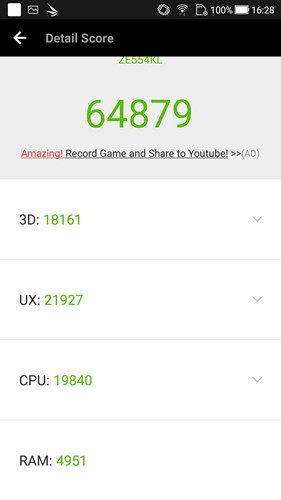
PCmark
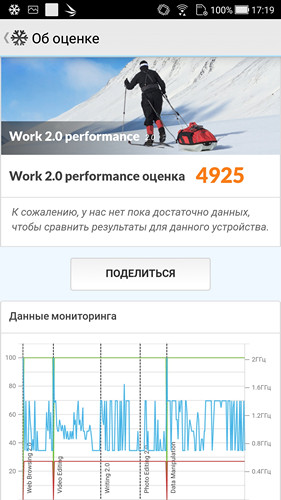



Gfxbench




3Dmark


AnTuTu

PCmark


Battery capacity by modern standards is average - 3300 mAh. When testing for the duration of work, the charge decreased from 100% to 20% in 11 hours and 40 minutes.
Conclusion
The glass-aluminum case of ZenFone 4, in my opinion, looks much prettier than a simple aluminum one, like the ZenFone 4 Max or Selfie. Yes, it is more gentle in operation, but it stands out stylishly against the backdrop of an armada of aluminum and plastic smartphones. The transparent case from the kit almost does not hide the design features, but it saves the heart from fading when the smartphone almost slips out of the hands when getting out of a pocket or bag. In terms of the quality of shooting, the main camera is not inferior to the ZenFone 3 Zoom, and the same matrices in the wide-angle and front-facing cameras make the ZenFone 4 a versatile gadget that can satisfy the photographic needs of the vast majority of users. He has good computing power and decent autonomy. However, again you have to choose between two SIM-cards or a memory card, but on board there is NFC and Wi-Fi 5 GHz, and these features are much more necessary and more useful.
Recommended retail price: from 32 990 rub.
All Articles